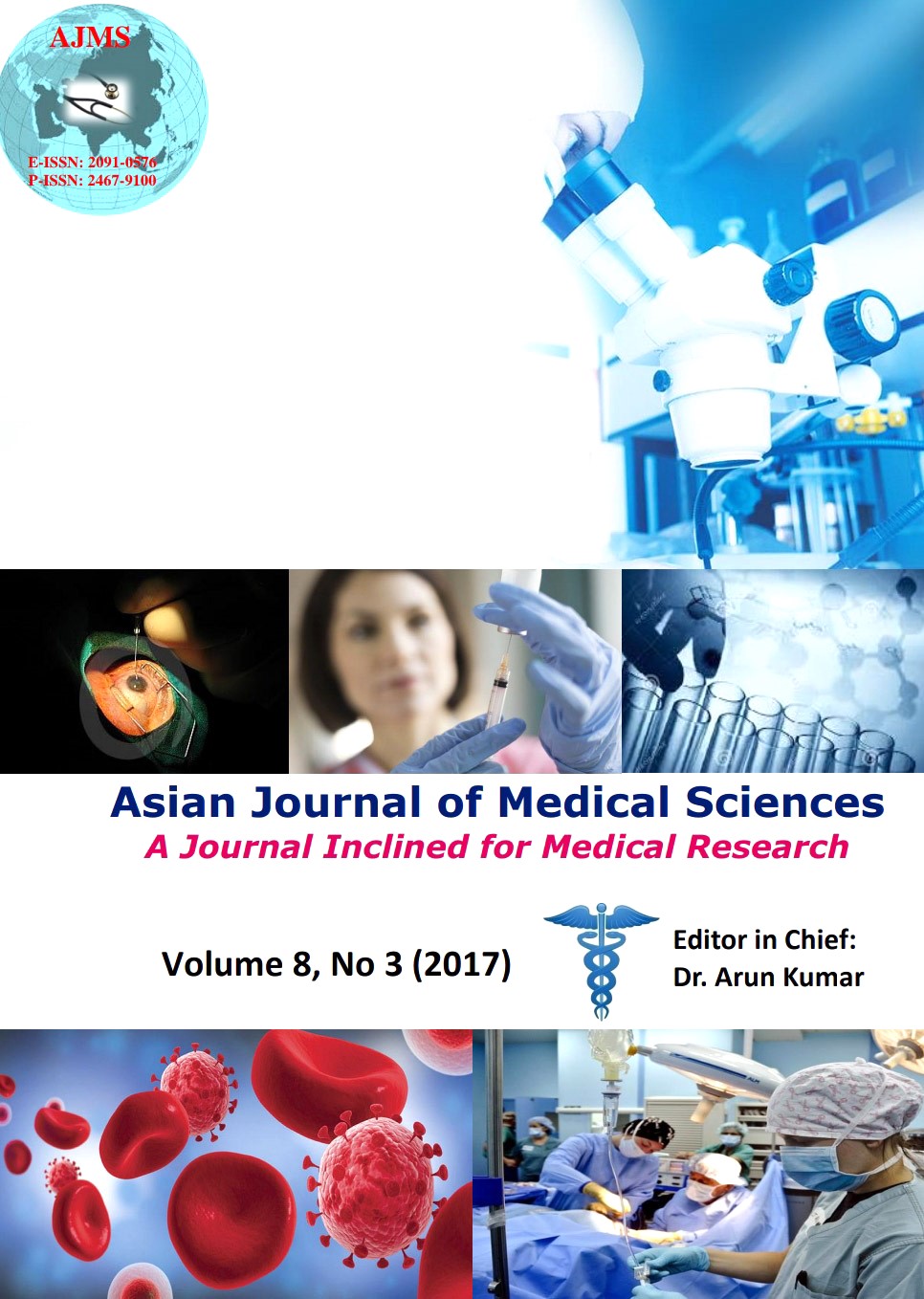Prevalence of intestinal parasitic infections among patients attending in a tertiary care hospital of eastern region of Nepal – A retrospective, laboratory based study
Keywords:
Stool, Intestinal parasites, Poverty, BPKIHSAbstract
Background: Intestinal parasitosis still constitutes one of the major causes of public health
problems in the world, particularly in developing countries. Nepal is a small, impoverished country prevalent to infectious diseases, including intestinal parasitosis. Poverty, lack of awareness, failure to practice proper hand washing after defecation, practice of open defecation, unsafe drinking water and use of improper toilets are some of the reasons causing of parasitic infections.
Aims and Objective: To determine the types of intestinal parasites in stool samples of patients attending to hospital. Materials and Methods: Stools specimens collected in standard stool vial were submitted in microbiology (2006-2010) unit at BP Koirala Institute of Health Sciences hospital (BPKIHS) were examined for intestinal parasites by direct wet mount using normal saline (0.9%) and lugol’s iodine (0.5%).
Results: A total of 11,791 stool samples (2928 in 2006, 2238 in 2007, 2151 in 2008, 2344 in 2009 and 2130 in 2010) were submitted to the Parasitology section of Department of Microbiology BPKIHS were included in the analysis. Of these, 675 (5.72%) were positive intestinal protozoa and 289 (2.45%) for intestinal helminths. Giardia intestinalis accounted for the most prevalent parasitic infection (3.34%) followed by Entamoeba histolytica/E. dispar (1.96%) and Hookworm (0.97%). A parasitic infection was observed to be highest among 20-50 years of age group and lowest in the less than 5 years group of subjects.
Conclusion: Intestinal parasitosis is a common problem. Amoebiasis, giardiasis and the common intestinal helminthes Ascaris lumbricoides, hookworm, and Trichuris trichiura were prevalent in our settings.
Asian Journal of Medical Sciences Vol.8(3) 2017 55-59
Downloads
Downloads
Published
How to Cite
Issue
Section
License
Authors who publish with this journal agree to the following terms:
- The journal holds copyright and publishes the work under a Creative Commons CC-BY-NC license that permits use, distribution and reprduction in any medium, provided the original work is properly cited and is not used for commercial purposes. The journal should be recognised as the original publisher of this work.
- Authors are able to enter into separate, additional contractual arrangements for the non-exclusive distribution of the journal's published version of the work (e.g., post it to an institutional repository or publish it in a book), with an acknowledgement of its initial publication in this journal.
- Authors are permitted and encouraged to post their work online (e.g., in institutional repositories or on their website) prior to and during the submission process, as it can lead to productive exchanges, as well as earlier and greater citation of published work (See The Effect of Open Access).




